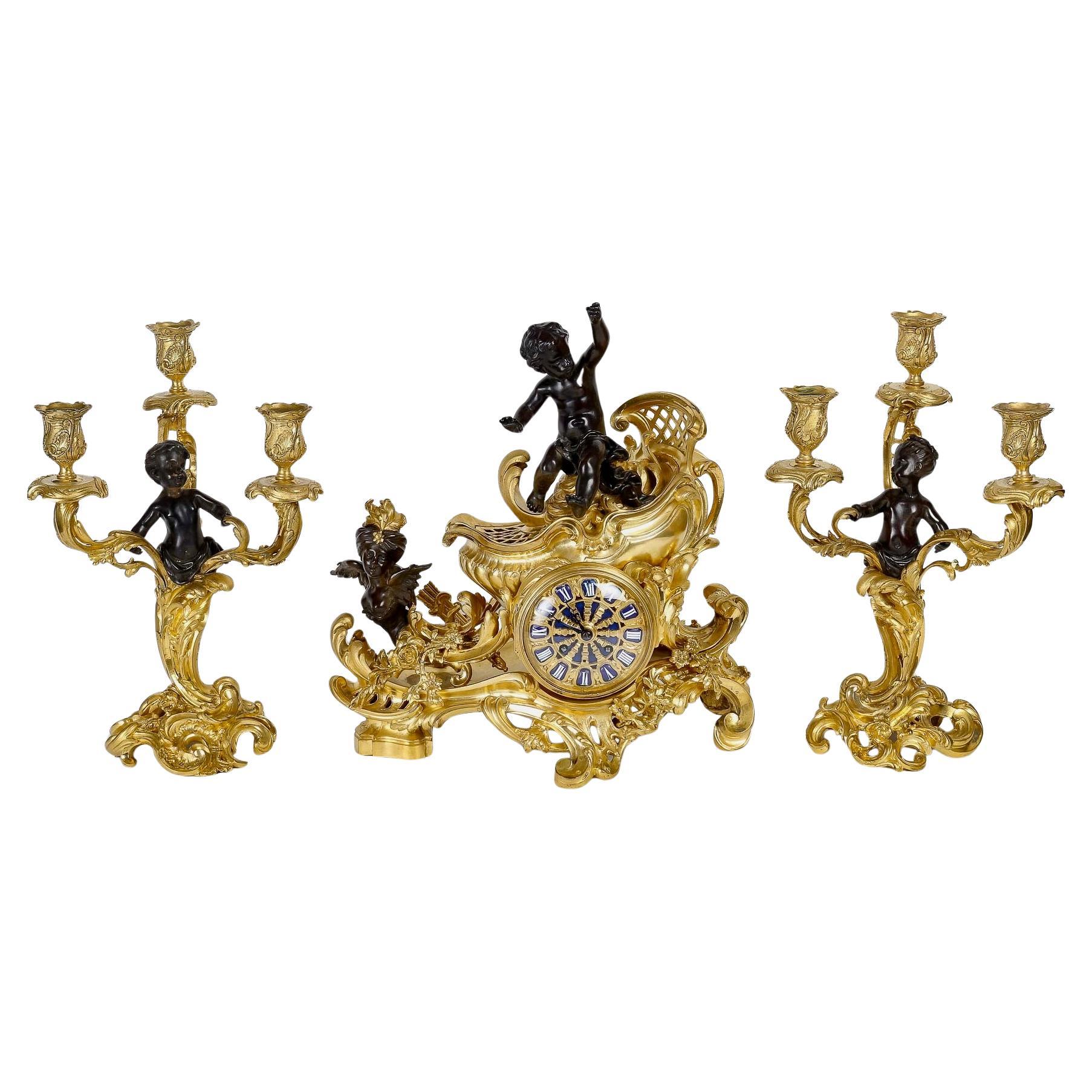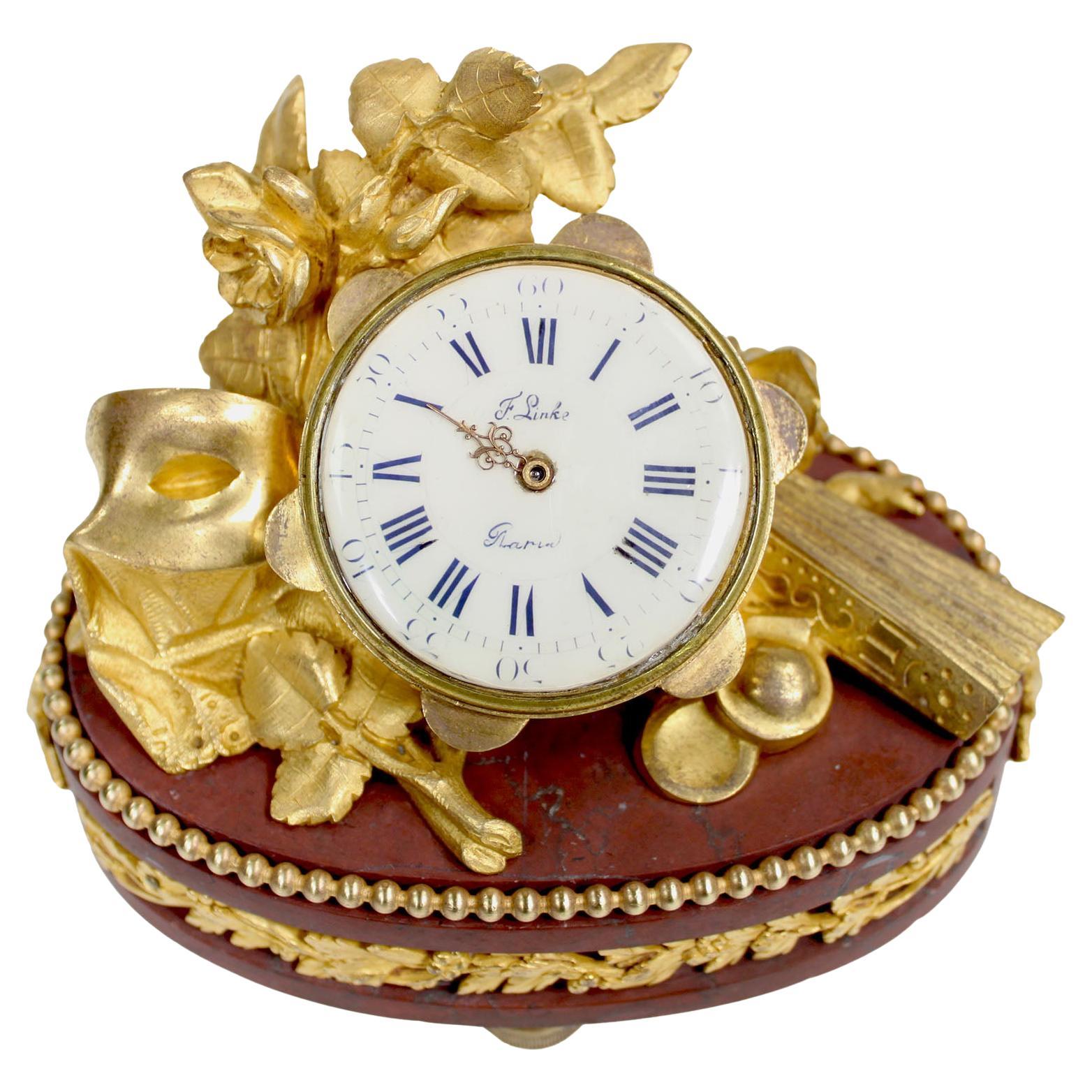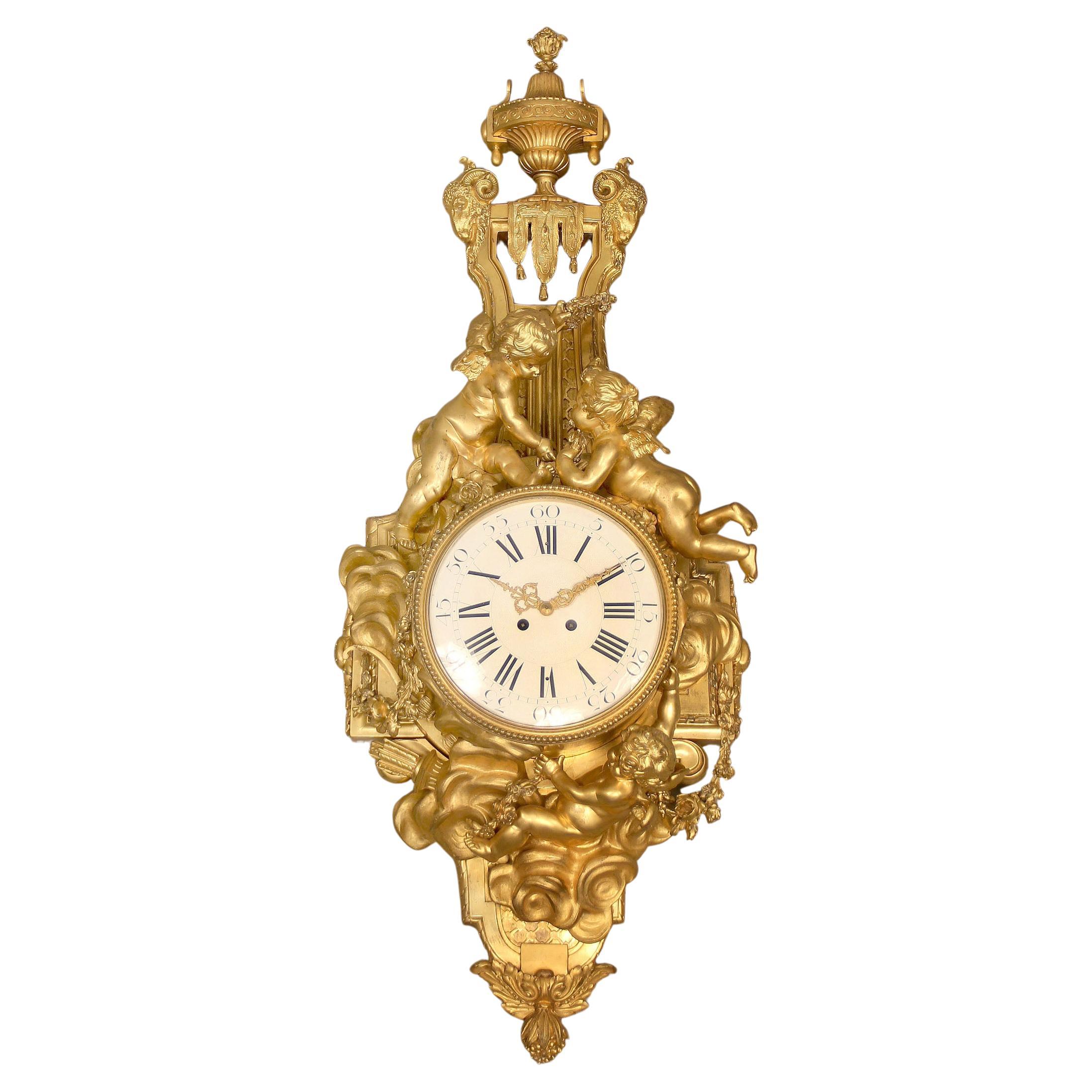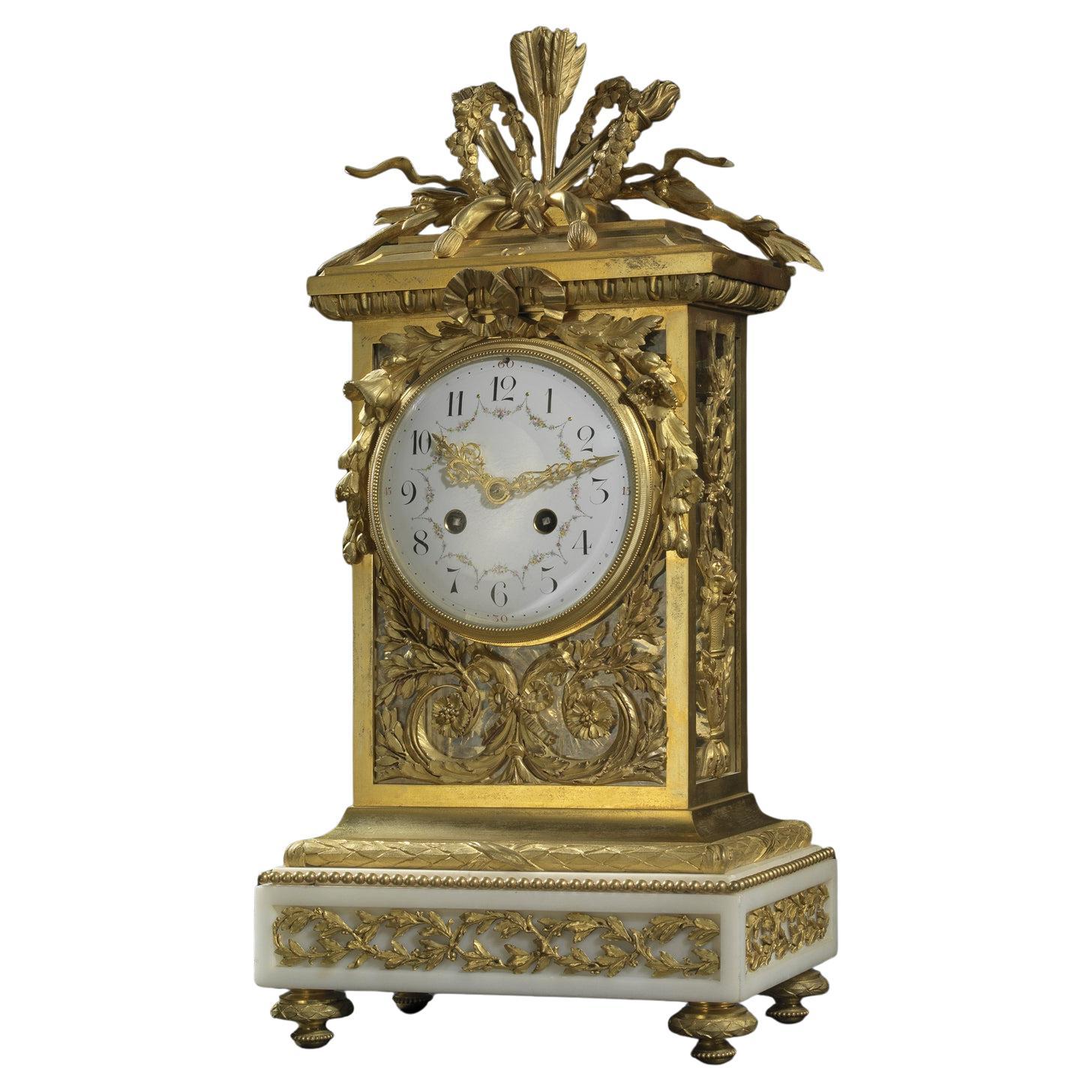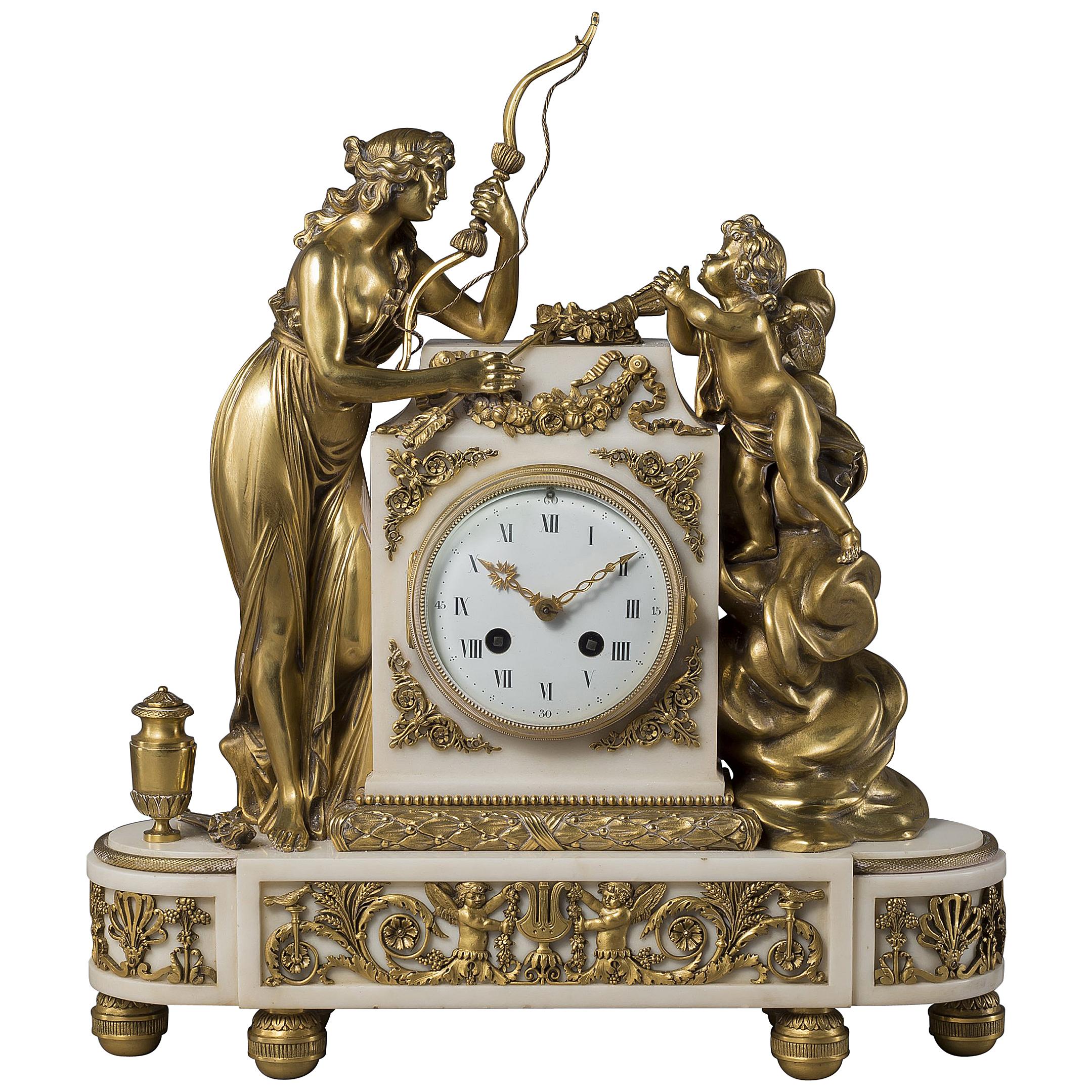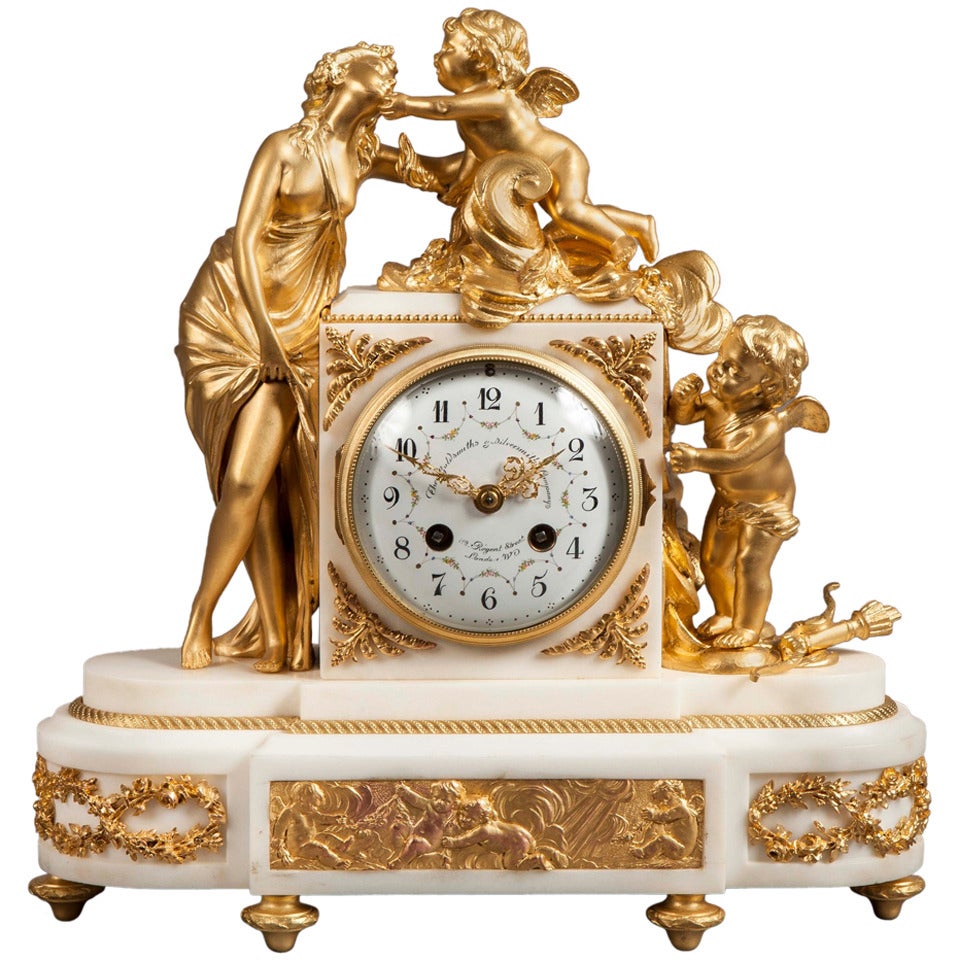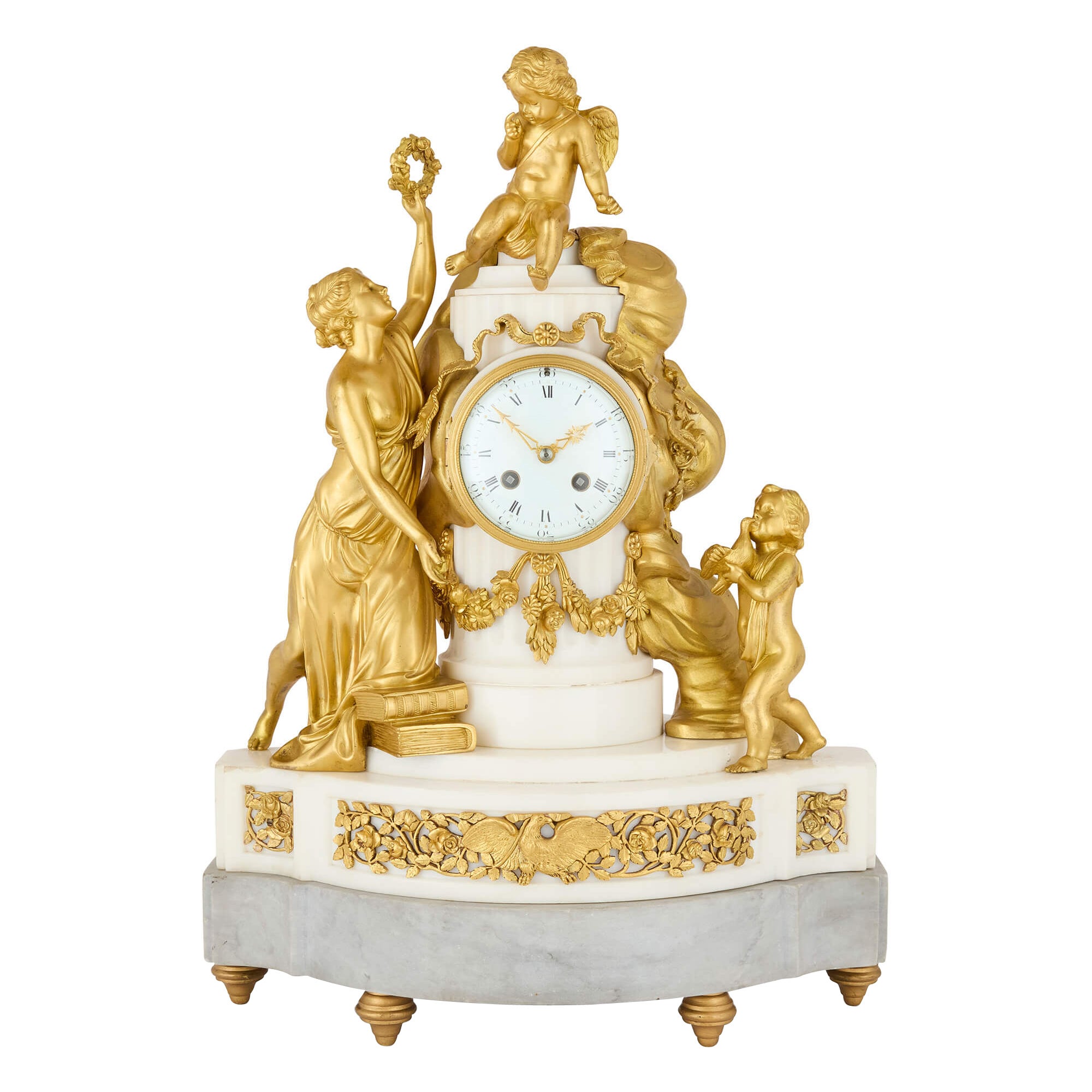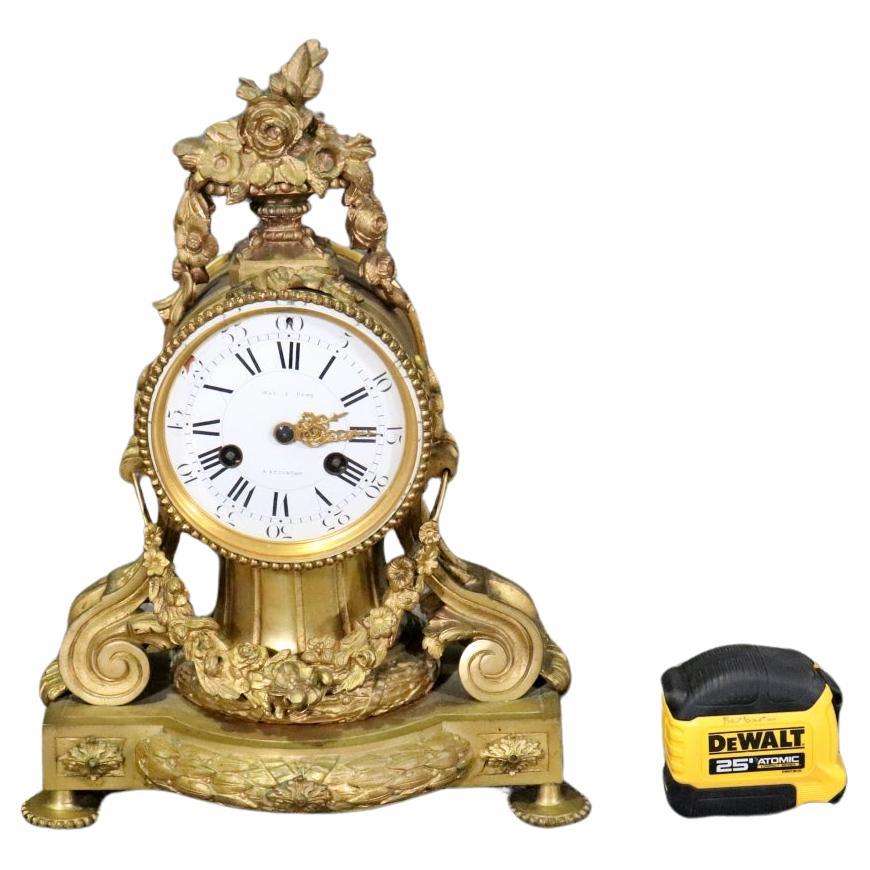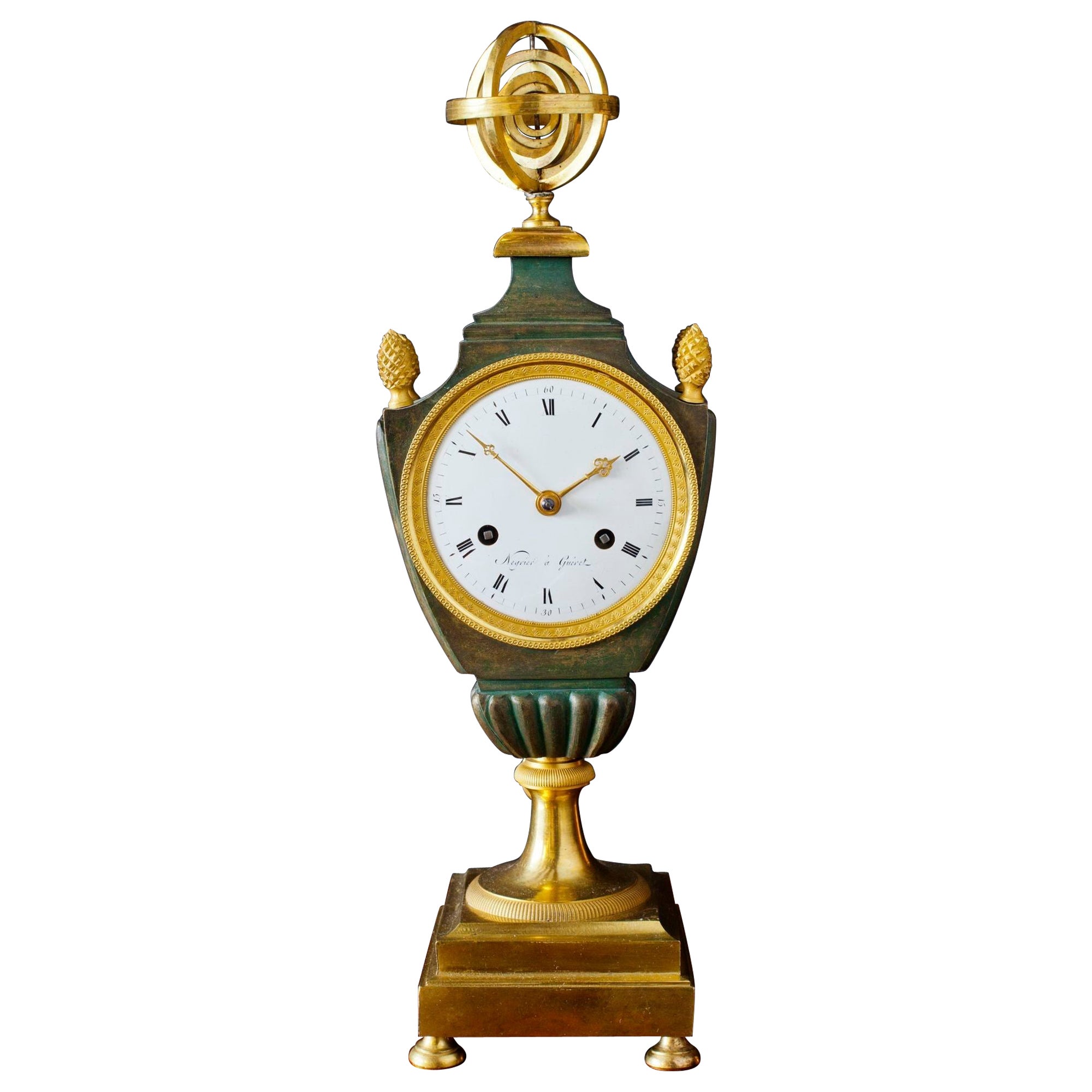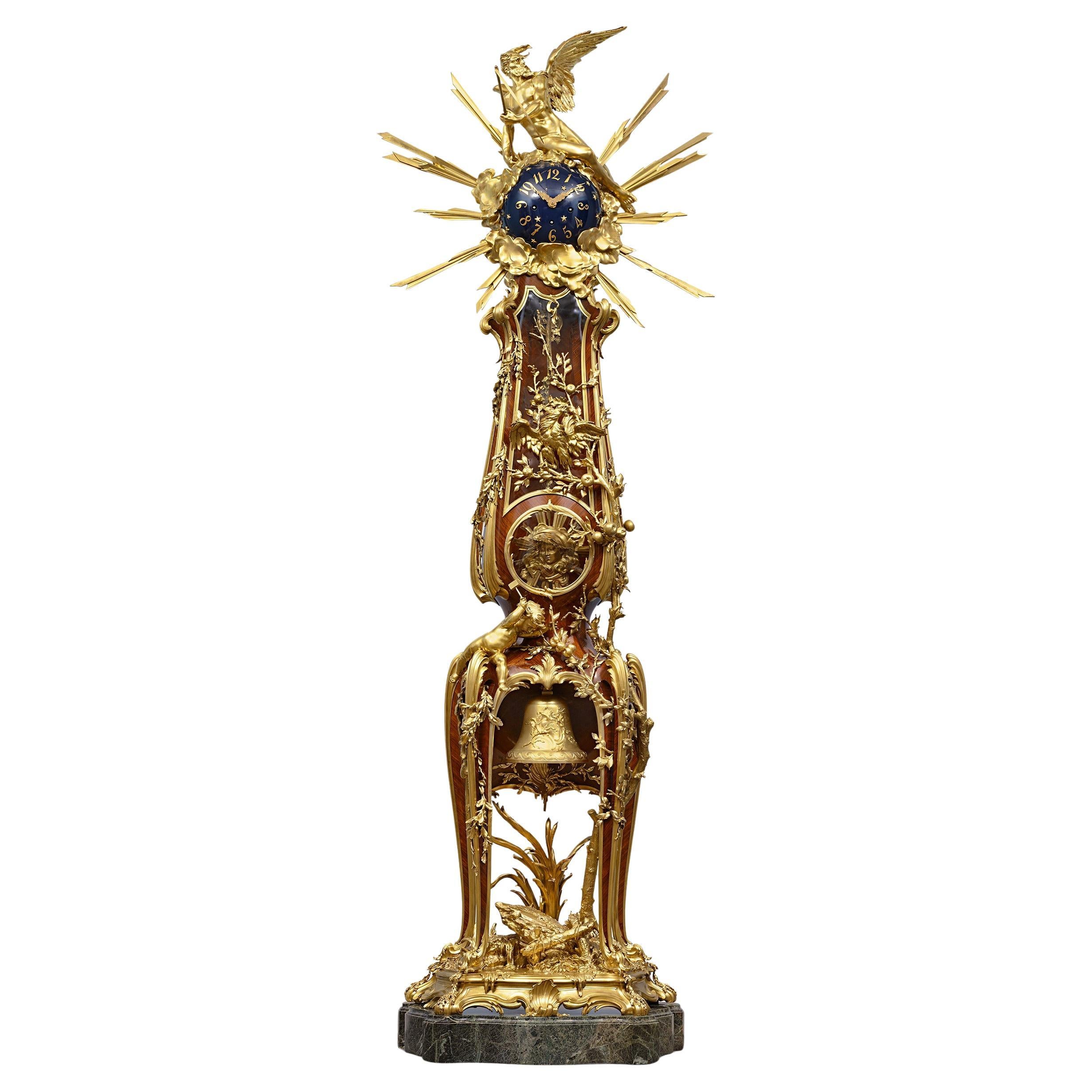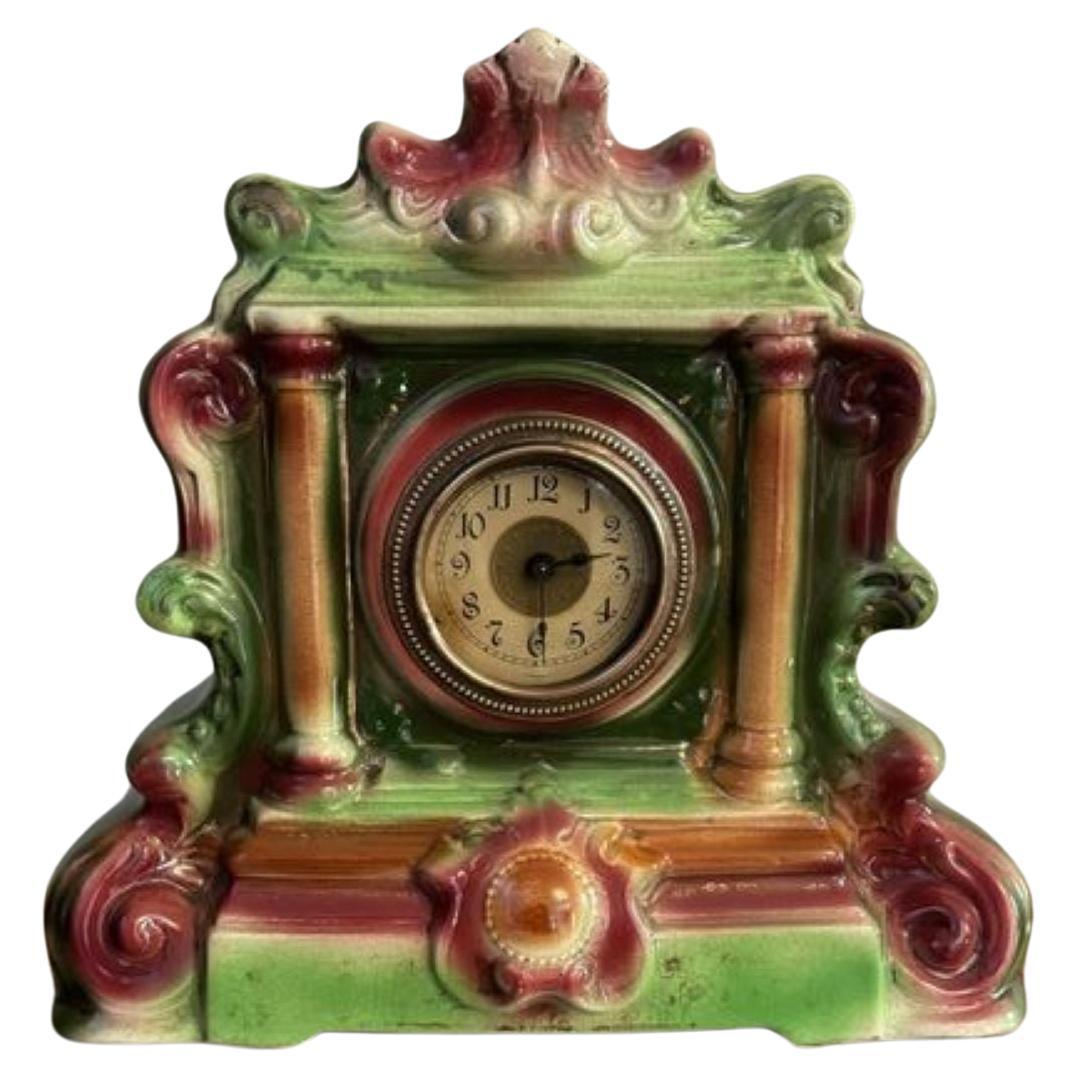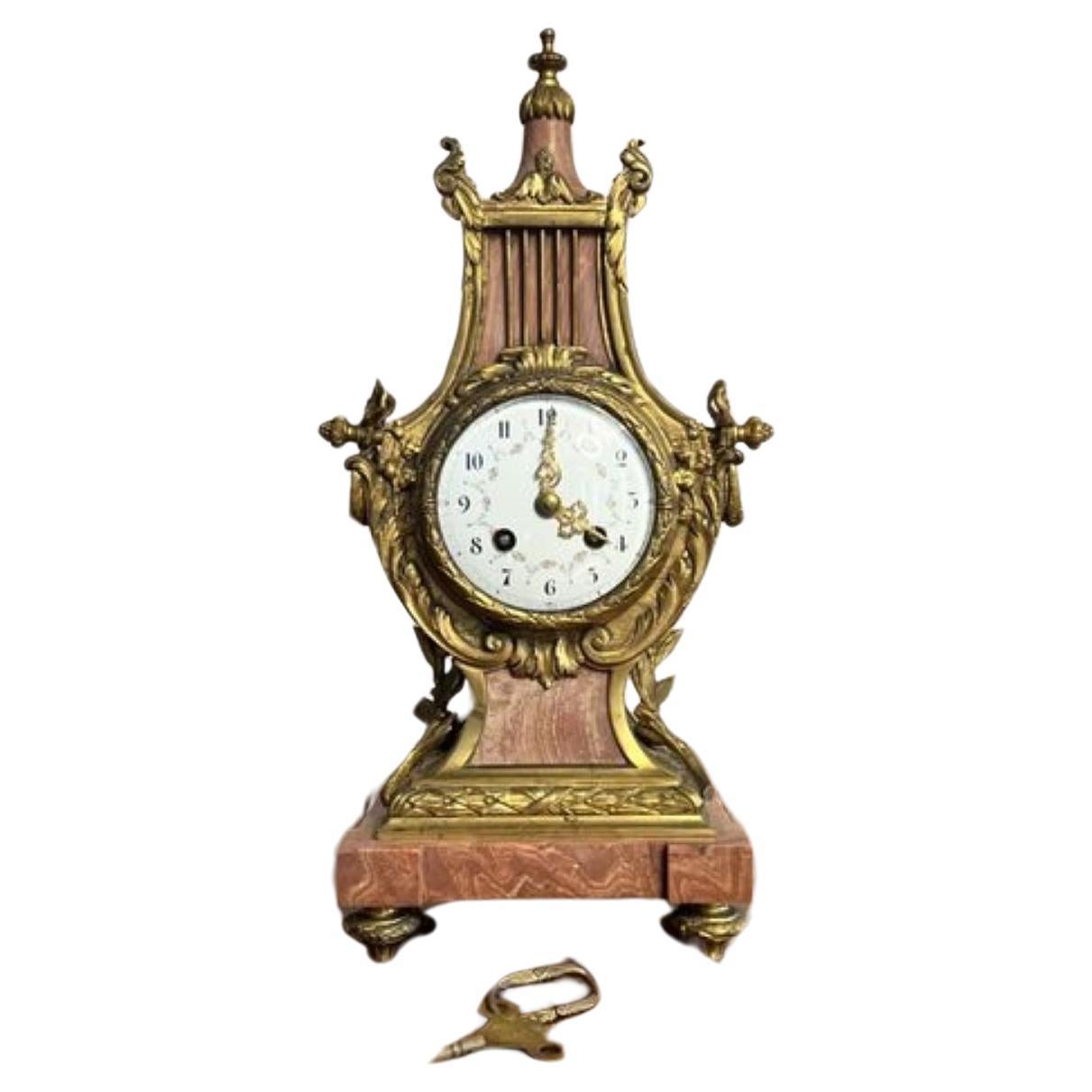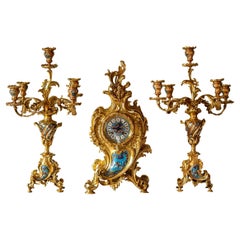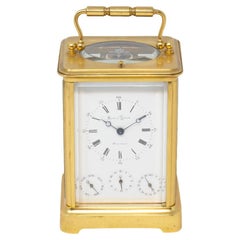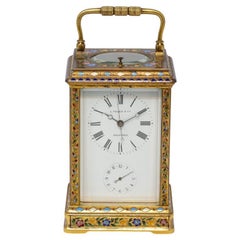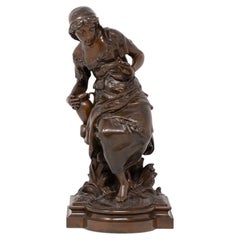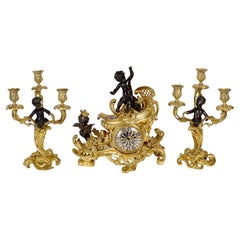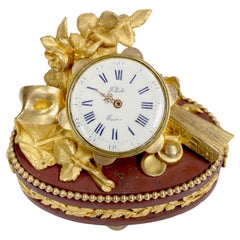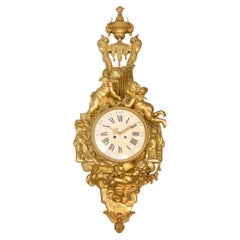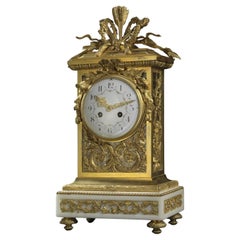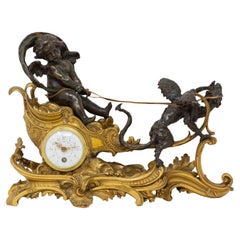
Antique French Mantle Chariot Clock François Linke
View Similar Items
Want more images or videos?
Request additional images or videos from the seller
1 of 19
Antique French Mantle Chariot Clock François Linke
$10,649.98List Price
About the Item
- Attributed to:François Linke (Maker)
- Dimensions:Height: 26.5 in (67.31 cm)Width: 36.5 in (92.71 cm)Depth: 13.5 in (34.29 cm)
- Style:Belle Époque (Of the Period)
- Materials and Techniques:
- Place of Origin:
- Period:
- Date of Manufacture:Circa 1895
- Condition:
- Seller Location:Newark, GB
- Reference Number:Seller: BONDD1stDibs: LU6971239544812
About the Seller
5.0
Gold Seller
Premium sellers maintaining a 4.3+ rating and 24-hour response times
Established in 2019
1stDibs seller since 2022
35 sales on 1stDibs
Typical response time: 2 hours
Authenticity Guarantee
In the unlikely event there’s an issue with an item’s authenticity, contact us within 1 year for a full refund. DetailsMoney-Back Guarantee
If your item is not as described, is damaged in transit, or does not arrive, contact us within 7 days for a full refund. Details24-Hour Cancellation
You have a 24-hour grace period in which to reconsider your purchase, with no questions asked.Vetted Professional Sellers
Our world-class sellers must adhere to strict standards for service and quality, maintaining the integrity of our listings.Price-Match Guarantee
If you find that a seller listed the same item for a lower price elsewhere, we’ll match it.Trusted Global Delivery
Our best-in-class carrier network provides specialized shipping options worldwide, including custom delivery.More From This Seller
View AllFrench Gilded & Champleve Clock Garniture
Located in Newark, England
Fine French late 19th century three-piece clock garniture comprising of a pair of candle sticks and clock in a matching set. The garniture boldly cast with rococo influence in the Lo...
Category
Antique Late 19th Century French Napoleon III Table Clocks and Desk Clocks
Materials
Metal, Bronze, Enamel, Ormolu
French Multi-Dial Gorge Case Carriage Clock
Located in Newark, England
Multi-Dial White Enamel
From our Carriage Clock collection, we are delighted to offer this superb model French Multi-Dial Gorge Case Carriage Clock. The Carriage clock within a gilt...
Category
Antique Late 19th Century French Napoleon III Carriage Clocks and Travel...
Materials
Metal, Brass, Enamel
Chinese Market Champleve Enamel Carriage Clock by L. Vrard & Co
Located in Newark, England
Extremely Rare French Champleve Carriage Clock for the Chinese Market
From our Carriage Clock collection we are delighted to offer this extre...
Category
Antique Late 19th Century French Art Nouveau Carriage Clocks and Travel ...
Materials
Brass, Enamel
French Antique Bronze Sculpture by Eutrope Bouret
By Eutrope Bouret
Located in Newark, England
Lady and the Bee
From our Bronze Sculpture collection, we are delighted to offer this beautiful French Bronze Sculpture by Eutrope Bouret. The Sculpture modelled in bronze with a su...
Category
Antique Late 19th Century French Belle Époque Figurative Sculptures
Materials
Bronze
Antique French Opaline Ormolu Mounted Violet Glass Vases
Located in Newark, England
BELLE EPOQUE CIRCA 1890
From our Glassware collection, we are delighted to offer this beautiful pair Antique French Opaline Glass Vases. The Antique French Vases with splayed feet u...
Category
Antique Late 19th Century French Belle Époque Vases
Materials
Bronze, Ormolu
Antique French Pair of Limoges Enamel Vases
By Limoges
Located in Newark, England
Belle Epoque Circa 1880
From our Decorative collection, we are pleased to offer this pair of Antique French Limoges Enamel Vases. The French Lim...
Category
Antique Late 19th Century French Belle Époque Vases
Materials
Metal, Enamel
You May Also Like
A French ‘Chariot’ Three-pieces Clock Garniture attributed to F.Linke circa 1890
By François Linke
Located in Saint-Ouen, FR
A French Ormolu and Patinated-Bronze ‘Chariot’ Three-pieces Clock Garniture
Attributed to François Linke (1855 - 1946), Paris, Late 19th/ Century
The clock representing a putto on ...
Category
Antique 1890s French Napoleon III Mantel Clocks
Materials
Bronze, Enamel, Ormolu
Fine Gilt-Bronze & Rouge Griotte Marble Table Clock - François Linke Index No 86
By François Linke
Located in Los Angeles, CA
A Fine French 19th Century 'Belle Époque' Gilt-Bronze and Rouge Griotte Marble Table Clock by François Linke (1855-1946) Index Number 86. The clockcase modelled as a tambourine amidst blossoming roses, a mask and fan, on an oval bead-edged marble plinth with recessed panels mounted with fruiting vines, on turned feet, the reverse of the white enamel clock dial with Roman hours and Arabic minutes signed 'F. Linke, Paris', timepiece movement. Circa: Paris, 1895.
François Linke (d. 1946) was awarded the gold medal for his Grand Bureau at the 1900 Paris Exposition Universelle. He was the most celebrated Ébéniste of his time. Born in Bohemia in 1855, he moved to Paris in 1881. He produced furniture of the highest quality at his workshops at 170, rue du Faubourg-Saint-Antoine, and established showrooms at 26, Place Vendme. A much simpler version of this commode, with fewer ormolu mounts and with no marquetry, is illustrated in Christopher Payne's "François Linke 1855-1946 The Belle Epoque of French Furniture" Antique Collectors' Club, 2003 Edition, Index 720, Page 498.
Literature
Payne, C., François Linke 1855-1946: The Belle Epoque of French Furniture, 2003, models illustrated pp. 160, 182, 247 and the black and white cliché on p. 487.
Another example of this model was sold at Sotheby's New York, Sale 19th Century Furniture, Sculpture, Ceramics, Silver and Works of Art on April 22, 2010, Lot 448 'Lot 448: FRANÇOIS LINKE 1855 - 1946 A GILT-BRONZE AND ROUGE GRIOTTE MARBLE TABLE CLOCK PARIS, CIRCA 1895, INDEX NUMBER 86' Sold for $10,000 USD
Another example of this model was sold at Christie's New York, Sale '500 Years: Decorative Arts Europe' (PROPERTY FROM THE COLLECTION OF RAYMOND AND MIRIAM KLEIN) on October 20, 2011, Lot 146A 'A FRENCH ORMOLU AND ROUGE MARBLE TABLE...
Category
Antique Early 1900s French Belle Époque Table Clocks and Desk Clocks
Materials
Griotte Marble, Bronze, Ormolu
$6,750 Sale Price
28% Off
Unique Late 19th-Early 20th Century Gilt Bronze Cartel Clock by François Linke
By François Linke
Located in Long Island City, NY
A Palatial and Unique Late 19th / Early 20th Century Gilt Bronze Cartel Clock By François Linke
François Linke
The heavy and great quality bronze clock is topped by an urn with ram...
Category
Antique Late 19th Century French Belle Époque Wall Clocks
Materials
Bronze
A Louis XVI Style Mantel Fine Gilt-Bronze Clock by François Linke
By François Linke
Located in Brighton, West Sussex
A Very Fine Gilt-Bronze Clock With A White Marble Base by François Linke.
The case signed 'Linke'.
This rare example of a clock by François Linke has a twin train eight-day mov...
Category
Antique 19th Century French Louis XVI Mantel Clocks
Materials
Marble, Enamel, Ormolu
Louis XVI Style Gilt Bronze and White Marble Clock By François Linke, circa 1890
By François Linke
Located in Brighton, West Sussex
A fine Louis XVI style gilt bronze and white marble clock depicting Diana and Cupid, by François Linke.
French, circa 1890.
Signe...
Category
Antique Late 19th Century French Louis XVI Mantel Clocks
Materials
Marble, Bronze
French Antique Ormolu Mantle Clock
Located in London, GB
An attractive Parisian mantle clock in the Louis XVI manner
Retailed by the Goldsmiths & Silversmiths Company
Constructed in Carrar...
Category
Antique 19th Century English Clocks
Materials
Marble, Ormolu
Recently Viewed
View AllMore Ways To Browse
Antique Smelter
Dragon Mantel
Copper With Crest
1900s Antique Clocks
Cherub Metal Cast
Ormolu Plateau
19th Century German Porcelain Collectibles
Gilt Bronze Plateau
Antique Powder Tins
Chariot Wheel
Iran Porcelain
German Bronze Antique Clocks
Dragon Mantle
Rococo Plateau
Mantle Antique German Clocks
Mantel Clock With Angel Gold
Antique French Baroque Ormolu Furniture
Battle Clock
